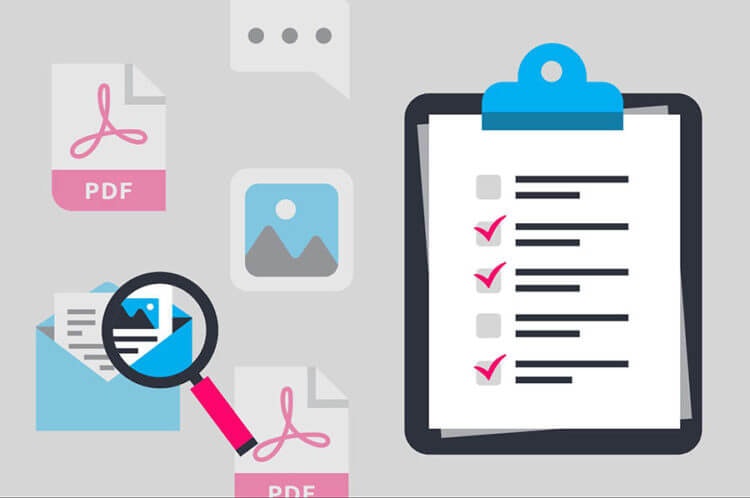Are you looking to level up your digital marketing strategy and make the most of your blog posts? If so, it’s time to embark on a content audit journey!
A content audit is a systematic process that helps you evaluate and optimize your existing content for better results. In this blog, we’ll guide you through the steps of conducting a content audit, share tips for refreshing pieces of content, and provide insights to optimize it for improved performance.
What is a Content Audit?
Before we dive into the nitty-gritty of conducting a content audit, let’s clarify what it means.
A content audit is a comprehensive analysis of all the content assets on your website, covering blogs, articles, images, videos, podcasts, and any other form of content. It involves evaluating the quality of your existing content as well as its relevance to current trends and user needs. The goal is to identify gaps, opportunities for improvement, and areas where content can be repurposed or optimized to align better with your digital marketing objectives and business goals.
Why Is A Content Audit Relevant?
Content audits are essential for any online business looking to maximize the effectiveness of its digital content. Content marketing is a complex discipline, and understanding how to optimize your content investments is key to achieving success.
The content audit process can identify the strengths and weaknesses of your existing content inventory, helping you focus on producing quality content that resonates with users. It also helps to focus on high-performing assets and repurpose them rather than starting from scratch.
Does your website need a refresh?
Step-by-Step Guide to Conducting a Content Audit
When it comes to conducting a content audit, there are five key steps you need to go through. Let’s take a look at them:
1. Define your goals and objectives.
Start by clearly defining your goals for the audit. Are you looking to improve SEO performance, increase organic traffic, or align your content with a new marketing campaign? Understanding your objectives will guide your audit process and help you prioritize areas for analysis.
Consider the specific metrics you want to improve, such as organic search traffic, average time on page, or conversion rates. Clear goals will give you a roadmap to follow throughout the audit process.
2. Take inventory of your content.
Create a comprehensive inventory of all the content on your website. Gather all the URLs of the pages that you want to evaluate in one spreadsheet on Google Sheets. Categorize this list based on types of content (blogs, videos, infographics, etc.) and relevant metrics such as traffic, engagement, and conversion rates. This inventory will serve as a foundation for your content audit, allowing you to track and evaluate the performance of each piece.
Review your sitemap to get a holistic view of all the pages on your site and how they are organized. Note any broken links, duplicate content, or pages with thin content that could be improved or removed.
Analyze your content hierarchy and internal linking structure. Are important content pages ranking high and getting sufficient traffic? Or are there opportunities to reorganize your content and links to improve discoverability and user experience? Tools like Screaming Frog and DeepCrawl can crawl your entire site and generate detailed reports to help analyze your sitemap and content structure.
3. Analyze content performance.
Now it’s time to dive deeper into performance metrics. Identify high-performing content that resonates with your audience and drives significant traffic, engagement, and conversions.
Likewise, pinpoint low-performing content that may require improvement or removal. Evaluate factors such as page views, bounce rates, time on page, and social shares to gauge effectiveness. This analysis will help you understand what content is working and what needs improvement.
4. Assess content quality and relevance.
Is your content accurate, up-to-date, and well-written? Does it align with your target audience’s needs and interests? Identify outdated or irrelevant pages that need updating or removal. Look for opportunities to consolidate similar content into more comprehensive and authoritative pieces. By assessing quality and relevance, you can ensure that your pages provide value to your audience and support your overall content marketing strategy goals.
5. Identify content gaps and opportunities.
Based on your analysis, identify content gaps and opportunities within your niche. Are there topics or keywords that your competitors are ranking for but you’re not? Discover opportunities to create new content that fills these gaps and aligns with your goals. Conduct keyword research to identify relevant search terms and topics that your target audience is interested in. This step can help you expand your content marketing efforts and capture a wider audience.
By the end of your content audit, you should have the following data:
- A comprehensive inventory of all content on your website
- Performance metrics and analytics for each page
- An evaluation of content quality and relevance
- Content gaps and opportunities to target in the future.
You Have Your Audit Data, What Happens Next?
Once you’ve conducted your content audit, it’s time to act on the insights and decide which ones to keep, update and reoptimize, or delete. Let’s discuss each one.
Keep
If your content is high quality, relevant, and effective in meeting your objectives, keep it! Metrics to check include page views, time on page, organic search traffic, and conversions.
Update and Reoptimize
If your content needs some minor fixes or updates to align with current trends, make the changes. Consider refreshing titles for better SEO performance and updating content to reflect new developments in your industry.
Reoptimizing existing content can help you target new keywords and capture more organic search traffic. Take a look at page titles, meta descriptions, and content body to determine if there are any areas that need improvement.
Delete
Low-performing pages can drag down your search rankings, so consider removing them if they are no longer relevant or not adding value. Don’t forget to redirect these pages to other content on your site to ensure a seamless user experience.
Tips for Refreshing and Optimizing Content
Improving your content involves both optimizing what you have already created and producing new pieces that will be helpful to your audience. Here are some tips for refreshing and optimizing:
Update outdated information.
Ensure your content reflects the latest industry trends and data. Remove any obsolete references and include recent data and statistics to enhance credibility. Keep an eye out for outdated product or service information and update it accordingly. By providing up-to-date content, you’ll establish your brand as a reliable and authoritative source of information.
Improve readability and structure.
Make your content more accessible and engaging by breaking it into scannable sections with headings, subheadings, and bullet points. Use shorter sentences and paragraphs for easier consumption. Incorporate visuals, such as images and infographics, to enhance readability and break up the text. By improving the structure and readability of your content, you’ll keep your audience engaged and encourage them to spend more time on your website.
Optimize for SEO.
Identify keywords and phrases relevant to your content and incorporate them naturally. Conduct keyword research to understand the search terms your audience is using. Optimize meta titles, descriptions, and image alt tags to improve search visibility. Consider adding relevant internal and external links to provide additional context and authority to your content.
Enhance visual elements.
Upgrade visual appeal by adding relevant images, videos, infographics, or other multimedia elements. Visuals can enhance engagement and make your content more shareable. Use high-quality images that align with your brand and support the message of your content. Consider creating custom graphics or videos to provide a unique and engaging experience for your audience.
Incorporate internal and external linking.
Strengthen the SEO value of your content by incorporating internal links to other relevant pages on your website. Internal linking helps search engines understand the structure of your website and improves navigation for users. Include external links to credible sources, industry influencers, or related content for added authority. This will help your content rank higher in search engine results pages (SERPs).
Boost Your Website’s Organic Performance With Expert Content Audit SEO
By conducting regular content audits and optimizing your existing content, you can maximize the impact of your digital marketing strategy. Remember to define your goals, take inventory of your content, analyze performance, assess quality and relevance, and identify gaps and opportunities.
Refresh and optimize your content by updating information, improving readability, optimizing for SEO, enhancing visual elements, and incorporating internal and external linking.
Now this is understandably a lot of work, especially if your website has hundreds of pages. But the payoff can be great in terms of improved organic performance and a more engaged audience. So, take the time to assess your content and improve it where needed. Your website visitors are sure to appreciate it!
If you’re ready to take your content audit to the next level, reach out to Markitors for a free SEO audit. Our team of on-page SEO and off-page audit experts can provide valuable insights and guidance to supercharge your content strategy and overall digital marketing efforts.
Don’t miss out on this opportunity to unlock the full potential of your website. Contact Markitors today and watch your digital presence soar!







